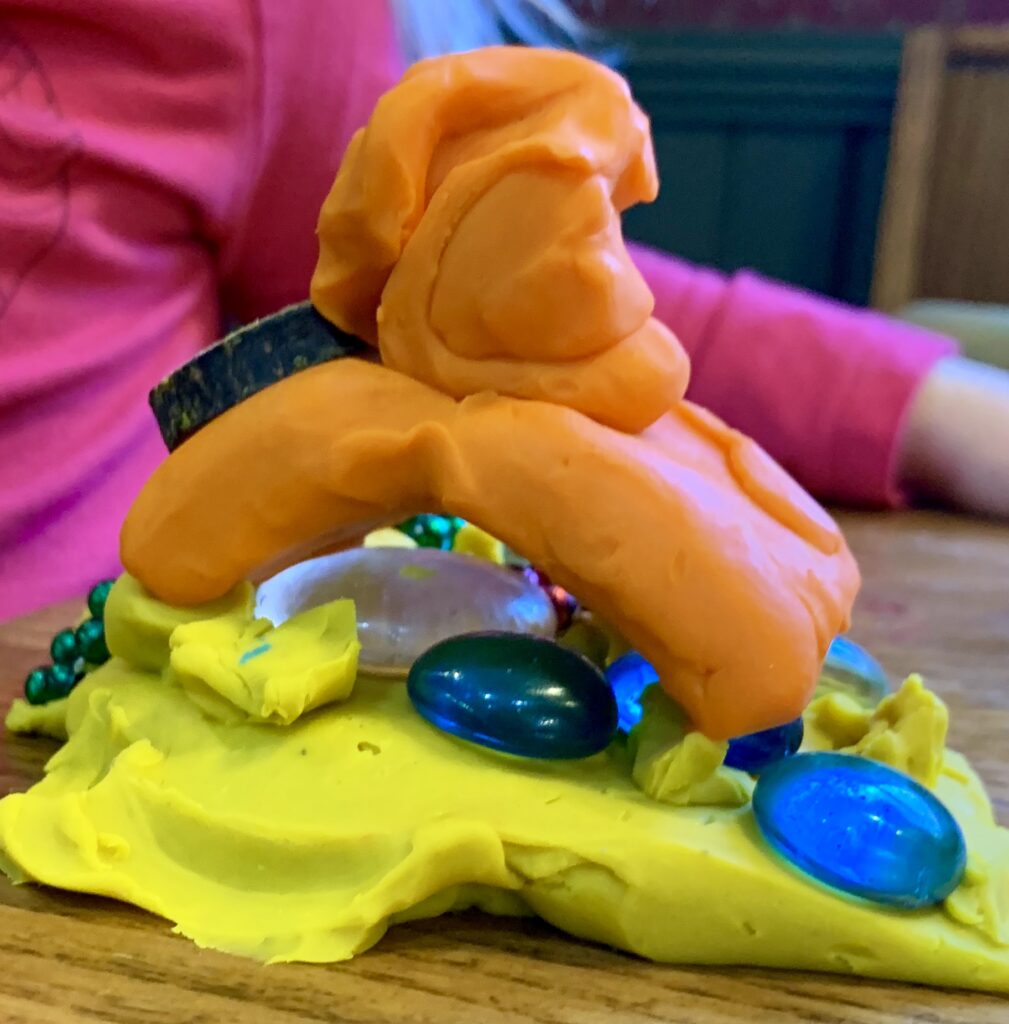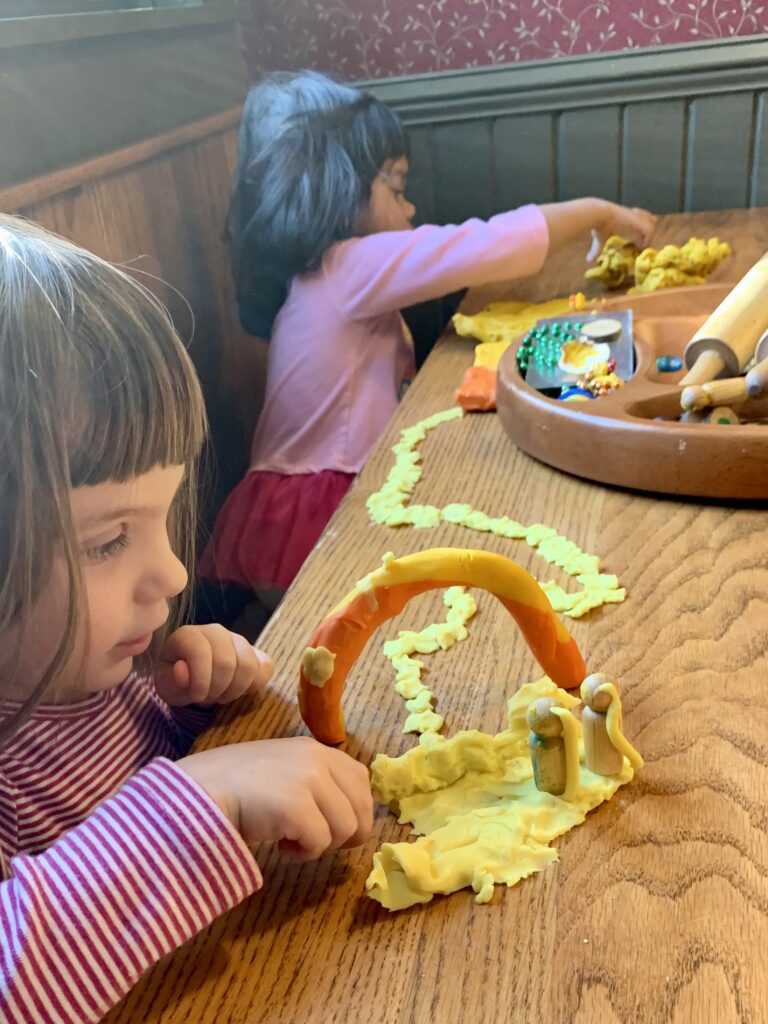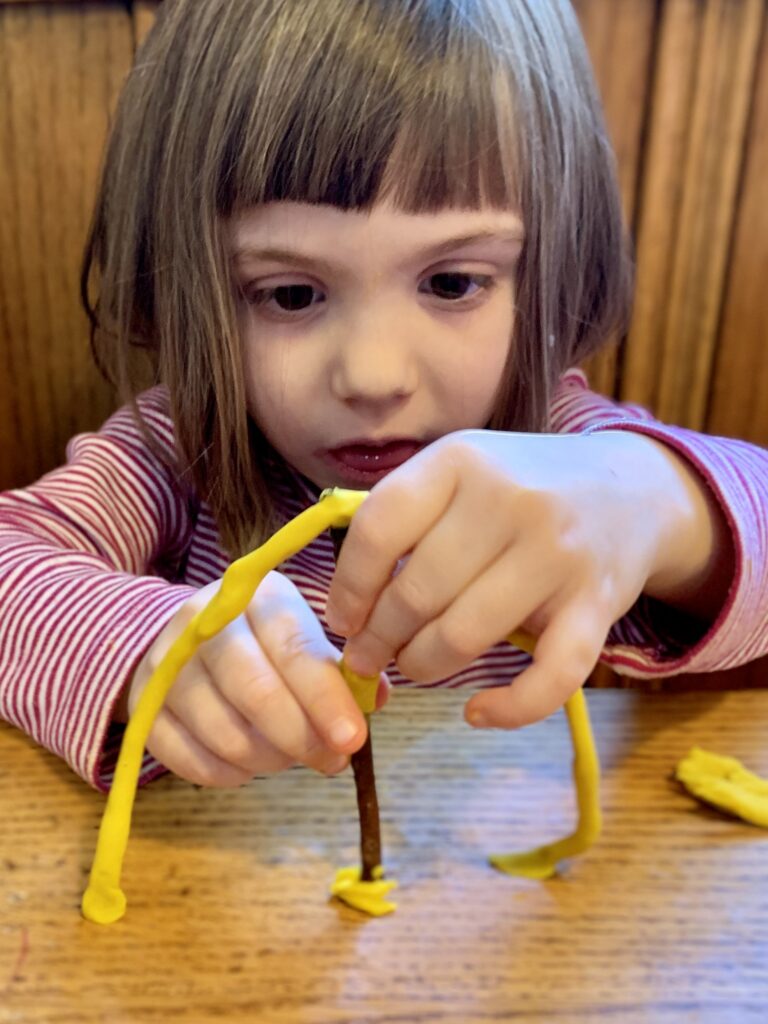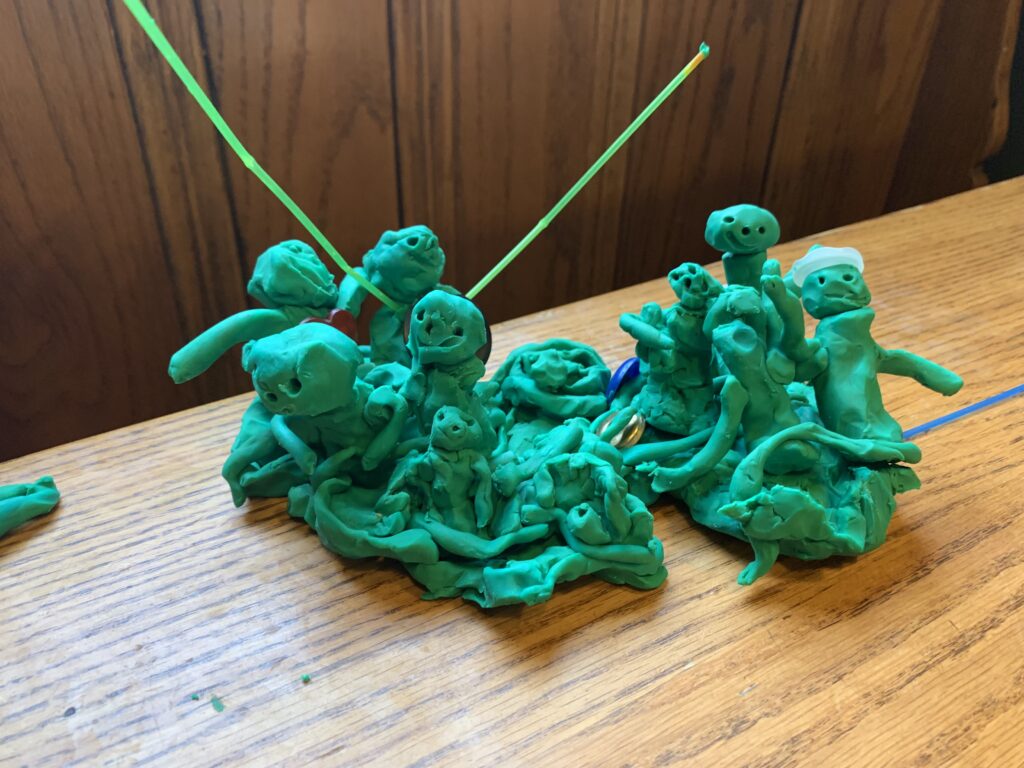Full STEAM Ahead With Clay Play!

“Look, look, I made a rainbow!” exclaims three-year-old Evelyn to the rest of the group gathered around our clay table.
I look at her clay creation, which consists of a small orange arch supported by a yellow base decorated with gemstones, tree bark and Mardi Gras beads.
“It is a rainbow!” Noa responds gleefully. “I can make a rainbow too!”
As Noa begins to fashion her rainbow, I extend the learning by mentioning that the shape is also called an arch.
“My grandma lives by the Arch!” Noa shouts.
Evelyn thinks she has seen the Arch too. And so begins our investigation of arches.

In the dynamic landscape of early childhood education, the role of STEAM (Science, Technology, Engineering, Art and Math) is often overlooked. But, by integrating STEAM activities into clay play, you can pave the way for hours of fun and engaging exploration and discovery.
Children are natural explorers, and clay engages their developing senses. Clay isn’t just a substance; it’s a material with transformative properties.
Through clay play, children become amateur scientists—observing changes in texture, shape and size. As they explore the possibilities of clay, they are thinking like scientists and engaging in the scientific method—posing questions, making hypotheses and testing their ideas through hands-on investigations.

Clay isn’t just a soft and pliable substance; it’s a tool for budding engineers. Through clay play, children learn about shapes, forms and spatial relationships.
As they mold and shape the clay, they experiment with building concepts as they develop a firsthand understanding of basic engineering principles. This hands-on exploration of form becomes a playful introduction to the world of structural design.
With nothing more than ideas and lumps of clay, children can embark on creative journeys that involve trial and error as they figure out how to turn their ideas into realities.
This interactive process fosters a growth mindset and the development of problem-solving skills, which are critical to the success of any STEAM endeavor.

Counting, measuring and comparing happen naturally during clay play. Whether children are dividing balls of clay into equal parts or estimating the size of their clay creations, they are gaining insights into mathematical concepts that will lay the foundation for later math learning.

By incorporating loose parts into clay play, children also learn about early engineering concepts such as balance, stability and form.
From buttons and beads to sticks and stones, loose parts enhance sensory engagement, foster the development of fine-motor skills and encourage children to think creatively as they transform these pieces into unique works of art.

In other words, clay play is a gateway to STEAM exploration.
As preschoolers and kindergarteners squish, mold and create with clay, they are not only engaging in artistic expression but laying the foundation for a lifelong love of learning and a deep understanding of the interconnected world of STEAM.
So let the clay adventures begin!

Looks like a fun project everyone would like.
Looks like a project that would fit nicely into our theme.
this looks fun. kids loves playdoh
love the rainbow clay project
Awesome
fun activity
love it
fun
Great ideas!
Different things you can create while using playdough.
Love it!
The use of other things with clay works well, I can always excuse them for not wanting to keep their work the same and encourage them to re-due what they are doing if they want to try a different idea.
Thank you!
I could suggest that we try to make Play Dough carrots and the processes they go through while growing.
We could use play dough as the outer edge of a pond. we could add water and let little play ducks float and even stretch that further to see what items do and don’t float.
I will make magnets and other items available for the children which will allow them to learn if the magnet can go through thicknesses of play dough. also, we can make sun and other things with play dough.
I love these activities with clay. Ths children are so engaged.
is safe for toddlers with close supervision
Yes, we love using clay with larger loose parts. The younger children like to poke, roll and squish. If you worry about loose parts, remove them or use larger pieces. I also start with larger or smaller amounts to give each child. If you worry about putting it in their mouth, remember they learn through their senses. It won’t taste good, it’s hard to remove and they will learn quickly, that wasn’t a great idea.
This activity looks like the kids would enjoy it because they are able to use their lil minds to create something that they have seen in person or in a book.
Learned how to use clay or play dough to further the understanding
I love this activity. The children are very engaged